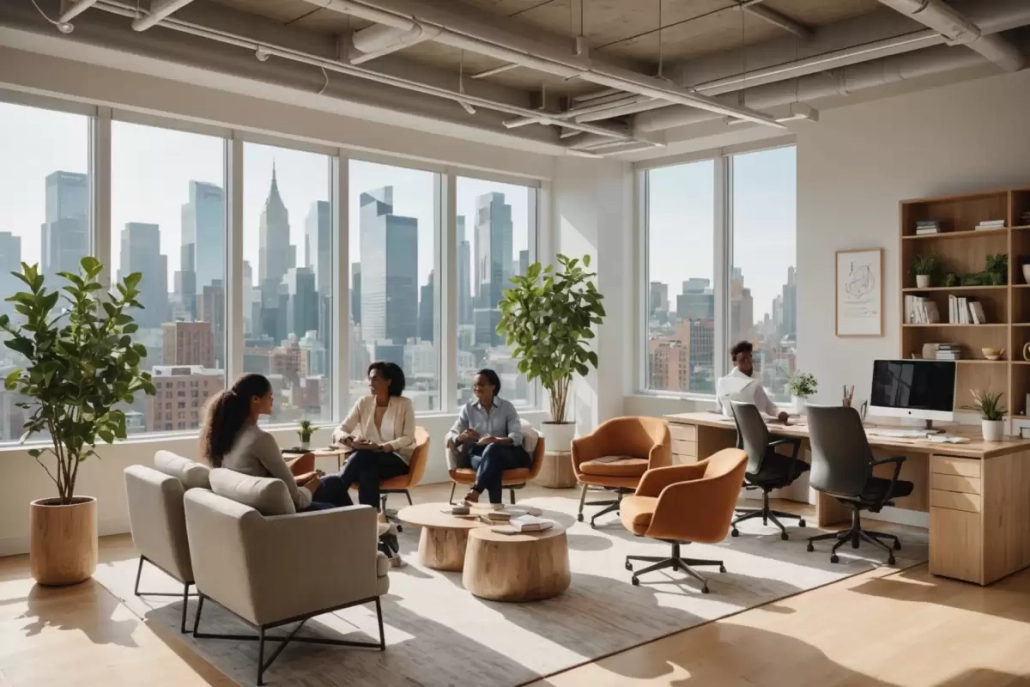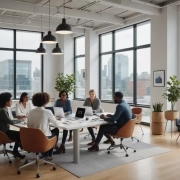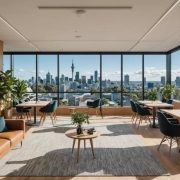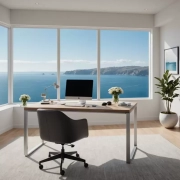Embracing Flexibility: The Rise of Shared Office Spaces in Modern Work
In the dynamic landscape of modern work, the traditional office is fast becoming a relic of the past. Today’s professionals are redefining what it means to work, and at the heart of this revolution is the concept of flexibility. Gone are the days of rigid nine-to-five schedules and static office cubicles. Instead, we’re embracing a new era where workspaces are as fluid and adaptable as the people who inhabit them. But why is this shift happening, and what does it mean for the future of work?
The Flexibility Factor: Why It Matters
Let’s face it: life doesn’t always fit neatly into a nine-to-five box. Whether it’s balancing family commitments, pursuing personal passions, or simply avoiding the dreaded rush hour, flexibility is king. This is where shared office spaces come into play. They offer a level of adaptability that traditional offices simply can’t match. By providing the option to choose when and where you work, these spaces empower professionals to design their work lives around their personal lives—not the other way around.
The Rise of the Hybrid Work Model
Hybrid work models, which combine remote work with in-office days, are gaining traction. They offer the best of both worlds: the freedom to work from home when you need it, and the collaborative energy of an office when you don’t. Shared office spaces fit seamlessly into this model, providing a professional environment that’s available whenever you need it. This flexibility can lead to increased productivity and job satisfaction, as employees have more control over their work environments.
Community and Collaboration: The Human Element
While technology has made remote work possible, it’s the human connections that make it enjoyable. Shared office spaces are more than just places to work; they’re communities. They bring together individuals from diverse industries, creating a melting pot of ideas and opportunities. Ever found yourself stuck on a problem? Sometimes, a fresh perspective from someone in a completely different field is all it takes to spark a breakthrough.
Networking Opportunities Abound
One of the most significant benefits of shared office spaces is the networking potential. The casual coffee break can turn into a brainstorming session, and the person you meet at the printer might just become your next business partner. These organic interactions are invaluable, offering opportunities for collaboration and innovation that are hard to come by in a traditional office setting.
The Wellness Connection: Designing Spaces for Wellbeing
In today’s fast-paced world, wellbeing is more important than ever. Shared office spaces are stepping up to the plate, offering environments that prioritize health and happiness. From ergonomic furniture to wellness programs, these spaces are designed with the whole person in mind.
The Impact of Environment on Productivity
The environment you work in can have a profound impact on your productivity and mental health. Shared office spaces often feature thoughtful design elements that foster focus and creativity. Whether it’s a quiet zone for deep work or a collaborative area for team meetings, these spaces are crafted to enhance your work experience. Plus, with amenities like massage chairs and yoga classes, they offer a holistic approach to wellbeing that traditional offices often lack.
Discover More: The Crate’s Take on Shared Office Spaces
If you’re intrigued by the idea of shared office spaces and want to dive deeper into their benefits, you’ll want to check out The Crate’s insightful blog post on the subject. Their article, Discover the Benefits of Shared Office Space Albany for Modern Professionals, explores how these spaces cater to the evolving needs of today’s workforce. It’s a must-read for anyone considering making the switch to a more flexible work environment.
Embracing the Future of Work
As we look to the future, it’s clear that the way we work is changing. The rise of shared office spaces is just one piece of the puzzle, but it’s a significant one. By offering flexibility, community, and a focus on wellbeing, these spaces are helping to redefine what it means to work in the 21st century. So, whether you’re a freelancer seeking a creative hub, a startup looking for a cost-effective office solution, or simply someone who values flexibility, shared office spaces might just be the answer you’ve been looking for.
For more insights into the evolving landscape of workspaces, check out this comprehensive guide on the future of workspaces. It’s an eye-opener on how work environments are adapting to meet the needs of modern professionals.










